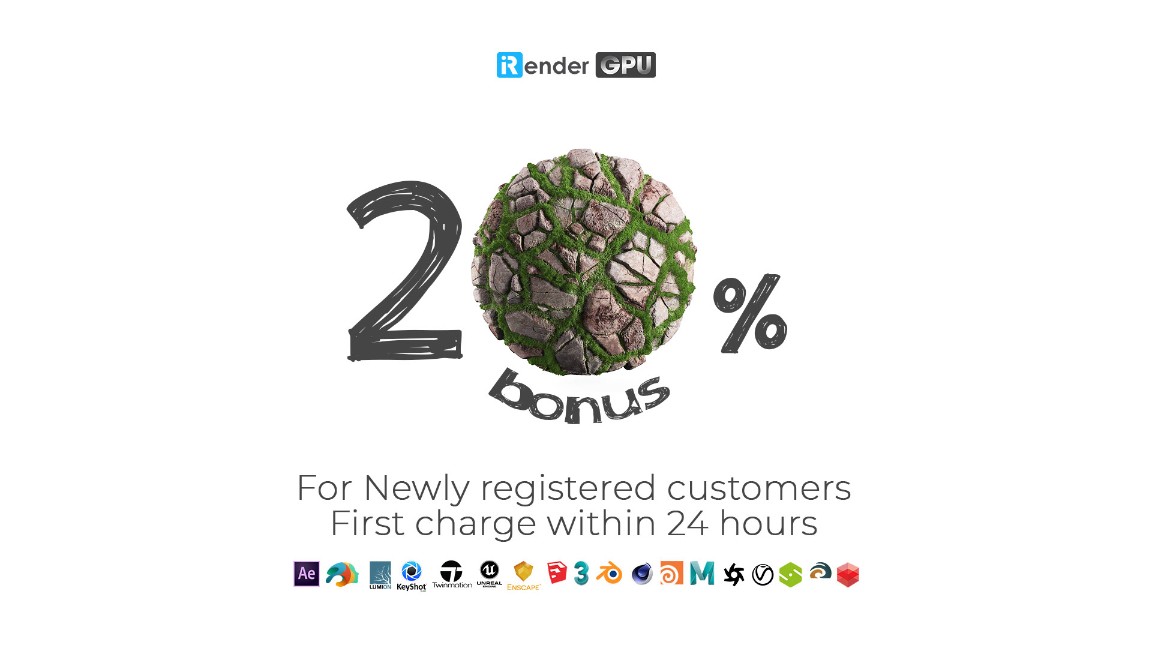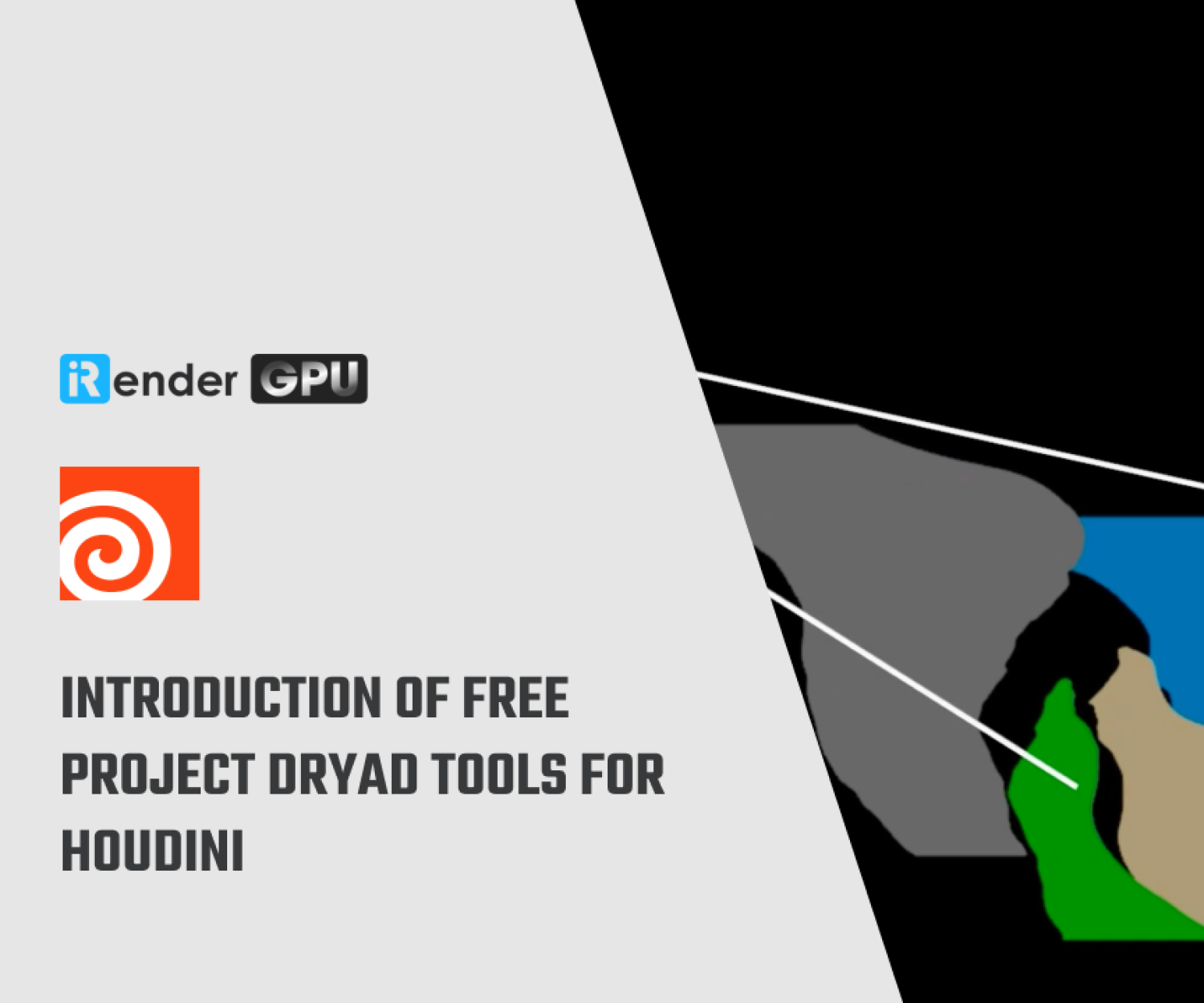Karma vs Mantra in Houdini : What are the differences?
Houdini is a 3D procedural software for modeling, rigging, animation, VFX, look development, lighting and rendering in film, TV, advertising and video game. It ships with SideFX’s render engines Mantra and Karma.
Then what are the differences between these two renderers in Houdini, and which one should we use for our project? Let’s discover with iRender in this article.
Immortal by Armin Lotfi
What is Mantra and Karma?
Mantra Renderer
Mantra is the highly advanced renderer included with Houdini. It is a multi-paradigm renderer, implementing scanline, raytracing, and physically-based rendering. You should use the physically-based rendering engine unless you have a good reason to use another engine. Mantra has deep integration with Houdini, such as highly efficient rendering of packed primitives and volumes.
Karma Renderer
On the other hand, Karma is Houdini’s physically-based path tracer, which is deeply integrated with USD (it uses USD as its scene description format and acts as a Hydra render delegate). While it shares some concepts with Mantra, Karma is a completely new renderer intended to replace Mantra for new projects.
Karma has two render engines: Karma CPU, which runs entirely in software on the CPU, and Karma XPU, which uses CPU resources and also takes advantage of the GPU and hardware acceleration. As of Houdini 19, the CPU engine is production-ready, whereas the XPU engine is an alpha-quality preview release.
What are the difference between Karma and Mantra?
Together with the release of Houdini 19, SideFX has made a feature comparison between Mantra and Karma CPU/XPU in this newest version. We will take a look at the detailed list below and see how they are different.
1. Part 1
| Feature | Mantra | H19 Karma CPU | H19 Karma XPU |
| Status | Production-ready | Production-ready | Alpha |
| CPU Renderer | Yes | Yes | Yes [Hybrid] |
| GPU Renderer | No | No | Yes [Nvidia] |
| USD/Solaris Support | No | Yes | Yes |
| IFD Support | Yes | No | No |
| Open Image IO | Yes | with Env Variable | Yes | Yes |
| Standard Surface Shader | Principled – VEX | Principled – VEX/USD Preview/MaterialX | USD Preview/MaterialX |
| VEX shading | Yes | Some trace() function support | No |
| CVEX: Lens Shader | Yes | Yes | No |
| CVEX: Volume Procedurals | Yes | Planned for Future Release | No |
| Toon Shader | VEX Shading | No | No |
| Rounded edge/Dirt masks | Yes | Yes | No |
| Texture Baking | Yes | Planned for Future Release | No |
| Hair Shaders | Yes | Karma Hair [can be used in MtlX networks] |
Karma Hair [can be used in MtlX networks] |
| Pyro Shaders | Yes | Pyro Shader[VEX] | XPU Pyro Preview [can be used in MtlX networks] |
2. Part 2
| Feature | Mantra | H19 Karma CPU | H19 Karma XPU |
| MaterialX Surface Shaders | No | Mtlx Standard Surface/USD Preview | Mtlx Standard Surface/USD Preview |
| MaterialX Disney 2012/2015 | No | No | No |
| Custom/Layered MaterialX Shaders | No | Yes | Planned for Future Release |
| MaterialX SSS | No | Yes | Planned for Future Release |
| MaterialX Color Management | No | Planned for Future Release | Planned for Future Release |
| MaterialX Displacement | No | Yes | Yes |
| Material Overrides | Material Stylesheets | [USD] | Assign Material and Material Variation LOPS | [USD] | Assign Material and Material Variation LOPS |
| Adaptive Sampling | Yes | Yes | No |
| Motion Blur | Yes | Yes | Yes |
| Depth of Field | Yes | Yes | Yes |
| Physical Sub Surface Scattering | Yes | Yes | No |
| Random Walk Sub Surface Scattering | No | Yes | No |
| Volumes | Yes | Yes | Yes [Pyro Preview Shader] |
| Heightfields | Yes | Yes | Yes |
| Instancing | Yes | Yes | Yes |
| Nested Instancing | No | Yes | Yes |
| Deferred Geometry Load | Yes | Planned for Future Release | Planned for Future Release |
| Subdivision | HoudiniSubdiv/OpenSubdiv | OpenSubdiv | OpenSubdiv |
| Displacement Shading | Yes | Yes | Yes |
| Crowd Support | Yes | Partial Support | USDSkel support, but not optimized | Partial Support | USDSkel support, but not optimized |
| NURBS | Yes | Tesselated at Fixed Rate | Tesselated at Fixed Rate |
| Lens Shaders | Yes | Custom VEX lens shaders | No |
| Absorption and Nested Dialectrics | Yes | Planned for Future Release | No |
3. Part 3
| Feature | Mantra | H19 Karma CPU | H19 Karma XPU |
| Denoising | Optix | Optix | Intel | Optix | Intel |
| AOVs | Yes | Yes | Yes |
| Deep Images | Yes | Yes | No |
| Cryptomatte | Yes | Yes | No |
| Light type: Point | Point Light | Yes | Yes |
| Light type: Dome | Environment Light | Yes | Yes |
| Portals on Dome Light | Portal Light | Yes | Planned for Future Release |
| Light type: Distant | Distant Light | Yes | Yes |
| Light type: Disk | Area Light | Yes | Yes |
| Light type: Rectangle | Area Light | Yes | Yes |
| Light type: Sphere | Area Light | Yes | Yes |
| Light type: Cylinder | Area Light | Yes | Planned for Future Release |
| Light type: Geometry | Geometry/Volume Light | Yes (points, curves, meshes, volumes) | Planned for Future Release |
| Shaping Control: Cone | Spot light | Yes | Planned for Future Release |
| Shaping Control: Focus | Yes | Yes | Planned for Future Release |
| Shaping Control: Barn Doors | Yes | Yes | Planned for Future Release |
| Shaping Control: IES Mapping | Yes | Yes | Planned for Future Release |
| Light Linking | Yes | Yes [No Geometry Lights] | No |
| Geometry Lights | Yes | Yes [points, curves, meshes, volumes] | No |
| Render Curves | Yes | Yes [tubes, ribbons, oriented ribbons] | Yes [tubes] |
| Render Points | Yes | Yes | No |
| Viewport Render | Yes | Yes | Yes |
| Render View | Yes | Render Gallery | Render Gallerys |
| Interactive Mplay | Yes | Yes | Yes [No click to render] |
| Render Snapshot Gallery | Yes | Yes | Yes |
| Render to Disk | Yes | Yes | Yes |
| HQueue – Distributed Rendering | Yes | Yes via Husk | Yes via Husk |
| Standalone Command-line render | Yes | Yes via Husk | Yes via Husk |
| CheckPointing | Yes | Yes via Husk | No |
| VEX FUNCTIONS | |||
| – gather loops | Yes | Simple Trace (no shading) | No |
| – illuminance loops | Yes | Never will be supported | No |
| – trace | Yes | Simple trace function (no shading) | No |
To sum up
To sum up, with Houdini 19, Karma CPU is production-ready while the new engine Karma XPU is in alpha. If you are using Solaris for lighting, you may want to consider using Karma XPU for interactive rendering in the viewport and Karma CPU for final rendering.
The main difference between Karma and Mantra is that Karma works with USD via Solaris/LOPS. Normal scenes must be imported into Solaris in order to render with Karma. Whereas Mantra is production-ready but doesn’t work with USD, and its development is limited to critical bug fixes. Since development time is focused on Karma going forward for Karma to take over as Houdini’s only supported built-in renderer.
However, whether you use Karma or Mantra, you still need a strong workstation to work efficiently and quickly. We offer a more accessible solution for Houdini users to speed up their render or simulation, that is GPU Cloud Rendering. Let’s see how we do it on iRender:
The Best Cloud Rendering Service for Houdini
iRender is a GPU-Acceleration Cloud Rendering Service for Single-GPU and Multi-GPU Rendering with Powerful Render Nodes: 2/4/6/8x RTX 3090. We provide high computing performance on the model of IaaS (Infrastructure-as-a-Service). There is a variety of servers from recommended system requirements (1/2 x RTX 3090) to high-end options (4/6/8 x RTX 3090), you can easily choose one suitable package for your project demands to speed up your rendering process many times.
However, we are more than just powerful configurations. With a reasonable price, a variety of useful features (Fixed Rental, Clone, NV Link, APIs, etc) and dedicated support from our team, we want to bring to you not only the best quality products but also the most comfortable render time and experience.
Thank you & Happy Rendering!
Source and video: sidefx.com
Related Posts
The latest creative news from Houdini Cloud Rendering , Cinema 4D Cloud Rendering , Redshift Cloud Rendering, Octane Cloud Rendering, 3D VFX Plugins & Cloud Rendering.









